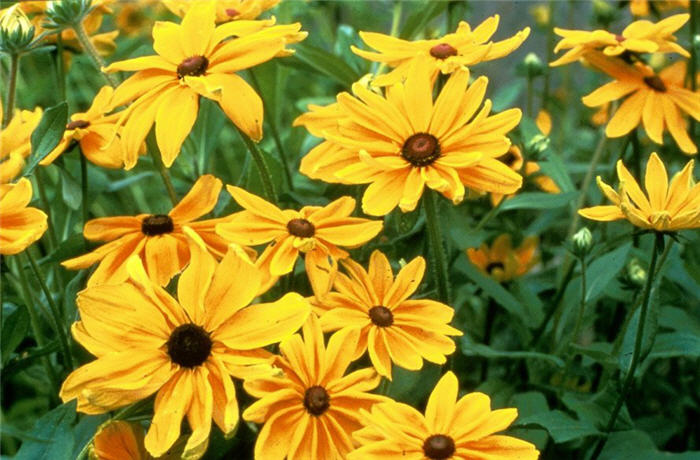| Botanical Name: Rudbeckia hirta | |
| Common Name: Gloriosa Daisy |

-
Anatomy
-
Culture
-
Design
Plant Type
Perennial
Height Range
1-3'
Flower Color
Gold, Orange, Red, Yellow, Multi-Colored
Flower Season
Summer, Fall
Leaf Color
Dark Green
Bark Color
n/a
Fruit Color
n/a
Fruit Season
n/a
Sun
Full
Water
Medium
Growth Rate
Fast
Soil Type
Sandy, Clay, Loam, Rocky, Unparticular
Soil Condition
Average, Rich, Poor, Well-drained, Dry
Soil pH
Neutral
Adverse Factors
n/a
Design Styles
English Cottage, Meadow, Mediterranean, Ranch
Accenting Features
Showy Flowers
Seasonal Interest
Summer, Fall
Location Uses
Perennial Border, Patio
Special Uses
Container, Cut Flowers, Small Spaces
Attracts Wildlife
Birds, Butterflies
Information by: Stephanie Duer
Photographer: Linda Engstrom
Photographer: Linda Engstrom
-
Description
-
Notes
Gloriosa daisy are a species of Rudbeckia known for their large flowers in a variety of warm tones. Blooming from mid to late summer and sometimes into the fall, colors range from clear oranges to russet reds, mahogany to brown, many with colored striations on their petals or different-colored eyes. Foliage is lance-like and deep green. Somewhat shorter-lived than R. fulgida or nitida, they are still lovely additions to a summer garden. Heights depend on variety, but generally 20 to 36 inches tall and wide. Slightly less drought tolerant than the other species.
Grow in well drained soil and in full sun. Tolerates a range of soil types, including clay soil, dry soil, shallow soil, rocky soil. Drought and heat tolerant. Though prefers full sun, will tolerate a little shade. Rhizamatous habit means it spreads to form dense colonies, so just plan accordingly when you plant it. Leave flower stalks all winter as the seeds will feed the songbirds and provide winter interest. Cut back stalks and old foliage in late winter. Drought tolerant once established, but blooming period will be longer and more flowerful if watered periodically.